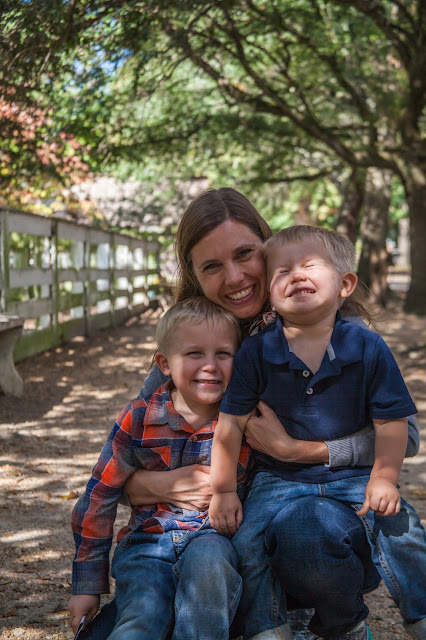The next couple of days were spent exploring every inch of the endlessly fascinating Williamsburg living-history museum. Williamsburg, capital of Virginia from 1699 to 1780, is known for the significant role it played in the American Revolution. In the state’s southeast, it forms what's called the Historic Triangle together with Jamestown and Yorktown. Its heart is Colonial Williamsburg, a historic district and living-history museum where actors in period costume depict day-to-day Colonial life in the streets, restored stores and workshops.
We spent a majority of the morning completing tasks on the Revquest, a fun scavenger type experience the museum has put together. We gathered clues, spoke to spies, and completed puzzles, to help save the revolution. It was so much fun!
Thomas was so adorable asking spies for clues
Little signs of fall!
These two are seriously such a couple of cuties and are always so much fun!
We had lunch at the bakery in the middle of town. I loved all of their packaging, so pretty!
Solving some puzzles and finding more spies
These two cuties were enamored with the pretty girl in the leather shop. Thomas kept asking her questions and even told her she had pretty green eyes.
]'
Karin had made reservations for dinner at Chrisiana Campbell's Tavern, this was something we were all looking forward too! There are many taverns at which to dine in Colonial Williamsburg, Karin chose this one because of it's prestige and special history. Christiana Campbell was owner and proprietress of one of Williamsburg’s most successful taverns which she opened in 1771. The business that bore her name still stands today to welcome guests and travelers. She provided rooms and food for people who traveled to Williamsburg to conduct business with government officials or who attended the regular meetings of the colony's merchants. When the General Assembly was in session, Campbell hosted members of the House of Burgesses, including Thomas Jefferson and George Washington. Washington recorded in his diary that he dined there 10 times in two months.
It had been a suuuuper busy day, it felt so good to sit down and rest our feet. We were all starving and southern tavern food sounded like the most amazing thing ever! It's tradition at Chrisiana's to tie your napkin around your neck to keep your entire front covered and safe from spills.
What an awesome day! We covered quite a bit of ground!
We didn't quite finish our RevQuest and there were a few other
buildings we didn't make it to, so we made a return to Williamsburg
but we needed a relaxing day to recover from how exhausted we all felt after today.
A post of what we did with our "lazy" day is coming up next!







































































